What is Plum Concrete?
Important Point
In mass concrete foundations, boulders of say 150 mm size up to 30% of the total quantity of concrete, are mixed in the wet concrete. This adds to economics and saves heat generation. Such concretes are called plum concretes.
After at least two layers of wet concrete is completed, well-shaped and thoroughly washed, angular rock pieces using a maximum size of not more than 60% of a layer of pour thickness are placed in the concrete, keeping a distance of more than one-and-a-half times of the biggest size of aggregates in the concrete.
The bottom of the boulders should be embedded in the wet concrete to avoid voids at the bottom. Concreting is continued without stopping.
These rock pieces become an integral part of a concrete structure.
Practical Applications of Plum Concrete
Plum concrete is particularly useful in large-scale construction projects where uneven ground or significant cost savings are needed. Its application in areas like foundations, side slopes, and dams makes it a versatile option in the construction industry.
While specific case studies and detailed cost analyses are not provided in this article, it is understood that plum concrete is often selected for projects where budget constraints are a priority, and where traditional concrete would be too expensive or impractical. The successful use of plum concrete typically involves careful planning and consideration of the site’s unique challenges.
Also, read: What Is Pile Foundation?
Difference Between PCC Concrete and Plum Concrete
Difference Between PCC Concrete and Plum Concrete: Plum Concrete
- Plum Concrete normally use on the uneven surface of the ground and another area. This uneven surface level by plum concrete. This method to reduce the cost of construction.
- Because of plum concrete, you are using large material part near about 60% of Stone and 40 % of concrete so this method to use cost-efficient in construction.
- Plum concrete original concept by the aggregate in concrete. This plum concrete use a maximum of 300 mm size aggregate
Also, read: Test for Compressive Strength of Brickent Concrete)
- P.C.C (Plain Cement Concert) is a base of concrete. Commonly use of PCC all construction work. P.C.C is a mixture of cement, water, fine aggregate, coarse aggregate, and water this simply mixture called P.C.C
- M 7.5, M 10 both grades of Plain Cement Concrete
- Use of P.C.C it is as a protective layer for the RCC above so that water from the RCC is not absorbed bt the earth below
- Moisture available in soil should not be absorbed by RCC footing which causes correction of reinforcement
- Provided a base for the concrete and also helped workers to set out the structure above in easied way.
Also, read: What Is Traversing in Surveying
Comparison of Plum Concrete and Other Concrete Types
To better understand the advantages and disadvantages of plum concrete, it’s helpful to compare it with traditional concrete and other variations like rubble concrete.
The table below outlines these differences:
| Aspect | Plum Concrete | Traditional Concrete | Rubble Concrete |
|---|---|---|---|
| Material Composition | 60-70% large stones, 30-40% M10 concrete | 100% M10 or higher grade concrete | Large stones mixed with concrete similar to plum |
| Cost Efficiency | Cost-effective for large areas with uneven ground | More expensive due to higher cement content | Similar to plum concrete but may use smaller stones |
| Environmental Impact | Lower CO2 emissions due to reduced cement use | Higher CO2 emissions due to full cement use | Lower emissions, especially when using recycled rubble |
| Application Areas | Foundations, side slopes, gravity dams | General construction, high-strength requirements | Similar to plum concrete, often used in similar applications |
| Structural Strength | Adequate for specified use cases, less than traditional concrete | Higher strength, suitable for critical structural elements | Comparable to plum concrete, depending on stone quality |
| Ease of Use | Requires skilled labor for proper stone placement | Easier to use, does not require stone placement | Requires skilled labor, similar to plum concrete |
Also, Read: How to Calculate Slab Steel Quantity from Drawing
Preparation of Plums in Concrete
1. Check the Quality of Plum Material.
- The stones to be used for plum concrete should be made of strong, hard, and ideal rock.
- The stones should not be of a flaky type.
- Stones used for plum concrete should be cleaned before use.
2. Batching
- First, the batch is prepared according to the size of the plum.
- The size of the plum in batching should not be more than 300mm.
- The plum material will be hand-picked or randomly selected by the workers and taken to the site.
3. Placing Plum Concrete
- For plum concrete, it is necessary to arrange the plum layer-wise in which concrete comes in the void between the plum.
- Where the plum is to be used, the plum should be washed first and all dripping surface water removed before inlaying the concrete.
- The stone shall not be dropped in place, but each stone shall be laid and carefully embedded so as to avoid any injury to the form or adjacent masonry and in such as manner that no plan of the weakness of unnecessary seams occurs in the structure.
Application of Plum Concrete
- Normal use plum concreter below footing as a base of footing, so that water from the footing is not absorbed bt the earth below.
- Plum Concrete can be utilized in areas that need massive concrete placements such as concrete dams or bridge piers. In these instances, pieces of stone roughly 150millimeters in size function as coarse aggregates to mix a plum concrete.
- Plum concrete using 150 mm size plums and with an effective cement content of 177 Kg/m3 was used for the construction of an original dam.
- It was thought that using the state-of-the-art high-speed mixers of sufficient capacity, a more cohesive concrete mix of 150 MSA could be obtained very easily.
- Similarly, in a different case, suppose the foundation pit for the bed of a machine is suggested to have a particular thickness; however, the hard stratum can be found in 3 m below the bottom level.
- Whereas in layout It had been suggested that the depth of foundation for bed could be 1.5 m.
- Considering that the foundation needs to be rested on the hard strata of soil, therefore plum concrete of thin ratio using 80mm -100millimeter size stones will be poured that is rammed up to 1.5 m and subsequently ordinarily designed raft, footings might be laid.
Also, Read: What does 1BHK, 2BHK, 3BHK, 4 BHK, 2.5 BHK, 1 RK, 2 BHK 2T, 3 BHK 2T, 3 BHK 3T Mean
Use of Plum Concrete
- A Plum concrete wall is specially adopted when the surface is uneven, and there is a waterlogging area.
- The main purpose of plum concrete is to achieve the required strength and reduces the cost.
- Plum concrete, often mixed according to a specific concrete mix ratio, is suitable for highway-side slopes, open channel side slopes, and base purposes.
- Used for leveling surfaces, especially in mountainous areas where the stone is also readily available, and cost can also be maintained.
Advantage of Plum Concrete
- Plum concrete, also known in some regions as plum concrete meaning in Hindi, is useful when the base is to be made during the rainy season, as the base is completely wet, and the height of the level increases as the soil is removed.
- In plum concrete, the plum should be kept close to each other so that concrete can be used effectively.
- Plum concrete is economically best to cover uneven surfaces and large areas.
- Plum concrete is suitable for highway-side slopes, open channel side slopes, and base purposes.
- Where the size of the plum is kept to 150 mm. Bedding in water-channel and plum concrete in its bend part is effective.
- Plum concrete in the embankment on the side slope of the highway protects the side.
- Plum concrete has a high vibration resistance which is especially used in roads, side slopes, and machine foundations.
Disadvantage of Plum Concrete
- Skilled Labor Requirement: Plum concrete must be arranged layer by layer, requiring skilled labor to ensure that voids are minimized and each layer is correctly aligned. This process can be time-consuming and costly, especially on smaller projects.
- Time-Consuming Process: The layer-wise arrangement and necessary care in placing plums increase the time required for both preparation and execution, which might extend the project’s timeline.
- Shuttering Costs: Due to the layered placement of plum concrete, shuttering is required for longer periods, potentially increasing the overall cost.
- Transportation and Handling: The weight and size of the plums make transportation and placement challenging, often necessitating additional equipment or labor.
- Risk of Voids: If not carefully arranged, voids may remain between the plums, which could reduce the overall strength of the concrete structure.
Also, read: What is Chain Surveying (Principal, Procedure, Method, Instrument)
Purpose of Plum Concrete
Plum concrete is used to attain the required surface-level below the foundation and footing. It is used to lessen the cost of PCC if the required thickness of PCC is large. Primarily it is used in mass concreting work such as side slops, barrier, and gravity dams.
For instance, in the construction of a residential building, the small area under a footing is too steep, then to use plum concrete.
Plum Concrete Procedure
- Dressing and leveling should be done where plum concrete is to be applied, and loose soil should be removed from the foundation. It should then be compacted.
- Then the side shuttering of the footing should be done.
- Adjustments should be made so that 150 mm of concrete comes around each stone.
- The stone used in plum concrete should be hard and durable. It should not be flaky.
- In concrete plum, the plum should be kept close to each other so that concrete can be used effectively.
- Plum concrete should not contain more than 30% of the total amount of concrete.
- Plum concrete should be layer-wise so that sufficient strength is obtained.
- A special vibrator should be used to prevent a void between the plum during concreting.
- Curing should be done for at least 7 days.
Mix Design of Plum Concrete
- PPC Cement 53 Grade: 220 Kg
- Water Cement ratio (w/c) : 0.6
- Free Water: 132 liters
- 300 mm Metal: 666 kg
- 20 mm Aggregates: 666 Kg
- 10 mm Aggregates: 539 Kg
- Fine Aggregate (Sand):1038 Kg
- Admixture Dosage :0.6%
- Admixture: 1.4 liter
- The density of Concrete: 2596 Kg/cum
You’re able to alter the mix design by altering the specific gravities of materials that can help it become applicable in accordance with the substance available at your location.
Changing that specific gravity will change the weight of material in mix design that is automatically calculated. Do not use these mixes directly without doing prior trials of it; the data provided is for educational and better understanding of mixes.
After doing a trial, if any issue observed, you can make a modification by adjusting the % of each size of aggregate to attain the required properties of fresh concrete.
To ensure a total of all aggregate percentage in a mix should some to 100%. In general, for direct placement concrete. A ration of fine aggregates to coarse aggregates kept between 35:75 to 40:60
Also, add stone of total wattage of all concrete 40% near about 666 kg of plum(Stone) in Plum concrete.
In the case of pump concrete, the fine content is kept over 45%. You’ll be able to adjust the percentages of fines and coarse by taking a look at the concrete produced during trial.
Admixtures play an important role in the properties of fresh concrete, especially in retention and workability. Do select admixture properly to ensure no failure during the real usage of concrete.
All can answer to the thread with their mix design of the same grade; this can help others to understand design in a better way and certainly will do a cost optimization.
Also, read: How to Calcuted a M30 Mix Design
Methodology of Plum Concrete
1. Transportation of Plum concrete:
The boulders are the size of a boulder (Size) near about 300 mm, which may be lifted by laborers easily, not too big or small. maximum
2. Before Placing of Plum Concrete in Leaving and Cleaning:
- The very first step that’s done initially is cleaning and leveling of the surface by the elimination of soft soil, which could lead to low bearing capacity.
- After clearing and grubbing, water is sprayed on the surface to allow it to be moist before placement of plum concrete.
- The cause of sprinkling water would be to ensure a proper bond of plum concrete together with the ground surface.
- Following a sprinkling of plain water anti-termite compound is sprayed, which is essential today for the perfect foundation of a structure.
3. Pacing and Spreading:
- Boulders are spread across the ground with very little gapping layer by layer, and concrete has been spread with pump all over the boulders in each layer, which slowly permeates within the gapping between boulders.
- This will help to bind it properly, after pouring concrete, boulders are thrown to the concrete, and the process repeats till the required level surface is reached.
4. Plum Concrete Curing:
- Curing ought to be done for the next 7 days minimum. Jute bags are spread over the entire area of plum concrete to retain moisture for quite a while after curing.
Also, read: Procedure for Rcc Concrete
Details & Specification of Plum Concrete
- Each layer plum concert maximum height 900mm did not exceed more hight in one layer
- Maximum crevices in one layer 150 mm only
- The volume of the plum from the concrete will not exceed 40% (percent) of overall volume.
- Plum concrete in use maximum M10 Grade concrete in this concrete aggregate of maximum size 25mm.
- Plum will comprise of black trap basalt of crushing strength of minimum 100 Kg /Sq.cm.
- Plum concrete density 1650 kg/Cubic.meter
This nominal maximum size of coarse aggregate should be as big as possible within that the limits given but in no case greater than one-fourth of their minimum thickness of this member, provided the concrete may be placed without difficulty so as to surround all reinforcement thoroughly and fill the comers of the form.
In terms of the need of the aggregate size, which may be utilized from the plum concrete, there are different recommendations from the IS code; the code says that for most of the common works that the size of 20 aggregates is best and suitable.
If there are not any restrictions for the flow of concrete to part 40 mm or larger is also utilized. However, where you will find reinforcement or the cover is small with all the formwork, 10 mm nominal maximum size plums should be used in plum concrete.
Plums above 150 mm and around any reasonable size could possibly be utilized in plain concrete work up to a maximum limit of 20 percent by volume of concrete if specifically permitted by the engineer-in-charge.
But for all the cases, the plums will likely be dispersed evenly and will not be closer than 150 mm from the surface.
Plum Concrete
It is formed by amalgamating coarse aggregate and cement which are set underneath the foundation or footing of a structure in order to attain a level surface for allocating the load equally. The plum concrete is actually an inexpensive variation of mass concrete.
What Is Plum Concrete?
Plum concrete is an economic adaptation for mass concreting. Plums volume should not pass 30% – 40% of the total finished concrete volume. Plum concrete also refers to Cyclopean Concrete or Rubble concrete. It should not be greater than one-third of the concrete mixer cross-section.
Difference Between PCC Concrete and Plum Concrete
Plain cement concrete or PCC is the most straightforward form of Concrete. It is produced by mixing primary ingredients such as cement, sand, and aggregates. While in plum concrete, instead of aggregates, medium and large stones are used as filler material instead of coarse aggregates.
Plum Concrete ratio
The Plum Concrete ratio should be 40/60, 40% plums (boulders), and 60% concrete (M10 or M15). Usually, the M15 concrete grade is used.
Plum Concrete Calculation
The quantity of plum concrete can be calculated, Volume of Plum Concrete=Volume of Plain Concrete+volume of Stone boulder added.
How to Prepare Plum Concrete?
There are two easy ways to prepare plum concrete. Either by adding the plum to the concrete mix during concrete mixing or spreading the plums over the cement concrete layer and then spreading another concrete layer.
Plum Concrete Specifications
The Plum Concrete ratio should be 40/60, 40% plums (boulders), and 60% concrete (M10 or M15). Usually, the M15 concrete grade is used. Plums beyond 160 mm and any reasonable size may be utilised in PCC work up to the maximum limit of 20% by concrete volume when specially allowed by the engineer-in-charge.
Uses of Plum Concrete
Plum concrete is used to attain the required surface-level below the foundation and footing. It is used to lessen the cost of PCC if the required thickness of PCC is large. Primarily it is used in mass concreting work such as side slops, barrier, and gravity dams.
Advantages of Using Plum Concrete in Construction
The addition of plum to concrete reduces the heat of hydration as it prevents the use of an excess quantity of cement without compromising on strength. Plum concrete is mainly used where mass concreting is required, as in the construction of gravity dams, embankments, filling of deep or uneven areas, foundations, etc.
Plum Concrete Vs. Regular Concrete Strength Comparison
Plum concrete has good compressive strength, which is comparable to regular concrete. However, its tensile strength is lower than that of regular concrete. Plum concrete can be easily moulded into shapes and structures. It also has good workability and can be poured easily.
Plum Concrete Applications in Road Construction
The uses of plum concrete are:
- For mass concreting where a high plain cement concrete (PCC) thickness is required due to strata.
- Under footing applications where the ground slope maybe between 1:10 to 1:50.
- In the construction of gravity dams, retaining walls, steep road slopes, bridge and culvert barriers.
Plum Concrete Vs Asphalt for Driveways
Plum concrete and asphalt are two common materials used for driveways. Here are some key points to consider when comparing them:
Composition:
- Plum Concrete: Plum concrete, also known as rubblization, is a mixture of large-sized aggregate (stones or rubble) and a binding material such as cement or lime. It is often used as a sub-base layer for roads and driveways to provide stability and support.
- Asphalt: Asphalt, also called bitumen, is a mixture of aggregates (gravel, sand, or crushed stone) and a petroleum-based binder. It is commonly used for surfacing roads, parking lots, and driveways.
Installation and Maintenance:
- Plum Concrete: Installing plum concrete typically involves compacting the large-sized aggregate and binding material to create a stable sub-base layer. It is then covered with a wearing course, such as asphalt or concrete. Maintenance usually involves regular inspection and repair of any cracks or deterioration in the wearing course.
Plum Concrete Specifications and Applications
What are the characteristics of aggregate used for plum concrete?
- The size of plum could be 150mm, 200 mm, 300 mm, or larger.
- The shape needs to be angular.
- Clean from any dirt.
- Hard, durable, sound, and free from cracks and structural defects.
Plum Concrete Meaning
What is plum concrete? Plum concrete, also termed cyclopean concrete or rubble concrete, is a mixture of wet concrete and a plum (large size, strong, and clean natural coarse aggregate or boulders of roughly 300 mm size or larger). Plum occupies approximately 30-40% of the total mass of concrete.
Plums in Concrete
Plum concrete is formed by the inclusion of medium to large stones of size up to 300mm or even larger as filler. It is used to increase the apparent yield of concrete for a given amount of cement i.e. to avoid using excess amount of cement without compromising on the strength. The large stones used are known as plums.
What Is Plum in Construction?
In construction or carpentry, the term plumb refers to a line or feature that is perfectly vertical. In technical design, it represents an imaginary line that runs straight to the center of the earth. Plumb is the counterpart to level, which means to be perfectly horizontal.
What Is a Yard of Concrete?
Most concrete purchases will be made in cubic yards, which equates to 27 cubic feet. For example, a project measuring 10 ft in length by 10 ft in width with a depth of 3.5 in will be just over 1 cubic yard.
What Is Plum Wall?
In construction, a framing member or wall installed so it is perfectly vertical, or plumb, will transfer its supporting load directly downward (compression stress), giving it maximum load-bearing capacity.
Plum Concrete Mix Design Tips
The concrete used for plum concrete should be a nominal mix of M10 (1:3:6) and the aggregate used in concrete of maximum size 25 mm. The plum’s volume in concrete should not be more than 50% of the total volume. Each layer thickness should not greater than 900mm, and the division should not be less than 150 mm.
Plum Concrete Patio Installation Cost
The cost of plum concrete patio installation can vary depending on several factors, including the size of the patio, the complexity of the design, local labor and material costs, and any additional features or customization you may require. It’s important to note that plum concrete is typically used as a sub-base layer for patios, and another surface material like concrete or stone is usually used as the visible top layer.
Benefits of Using Plum Concrete in Construction
Plum concrete is a cost-effective solution for constructing foundations, base layers, and retaining walls. The use of large stones or boulders in the mix reduces the quantity of cement, sand, and water required, resulting in lower material costs.
Like this post? Share it with your friends!
Suggested Read –
[/su_note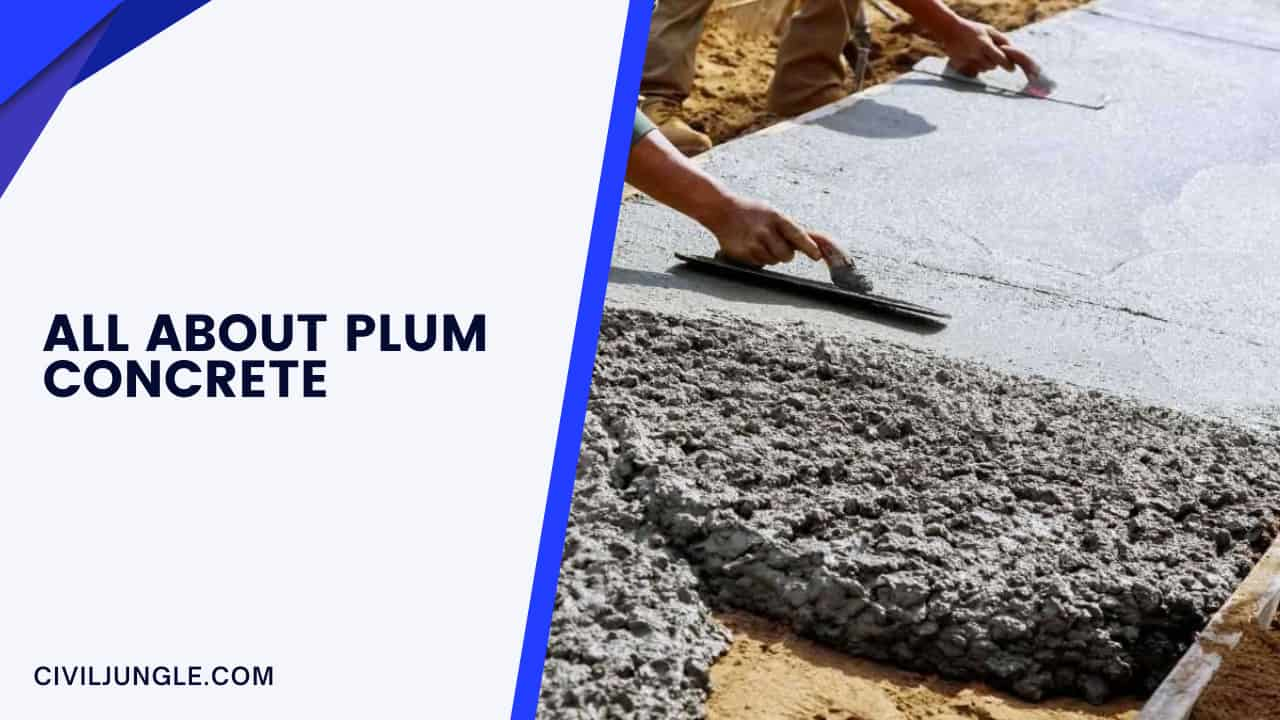
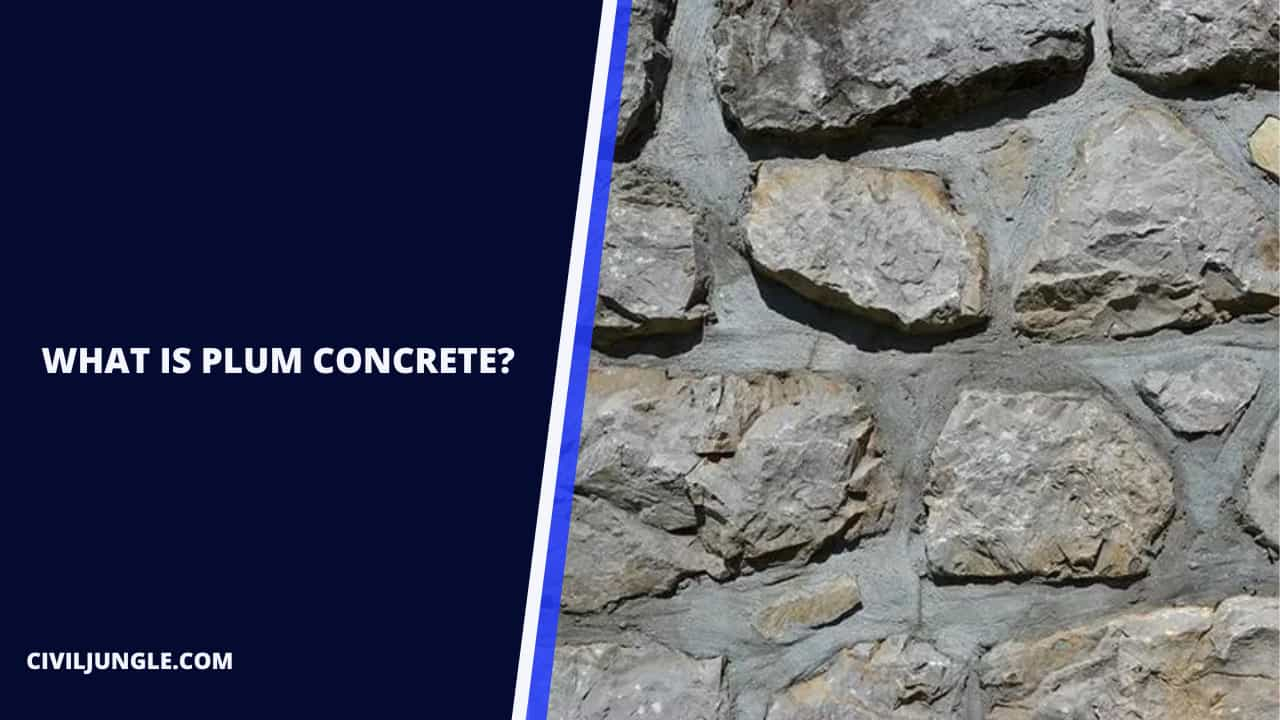
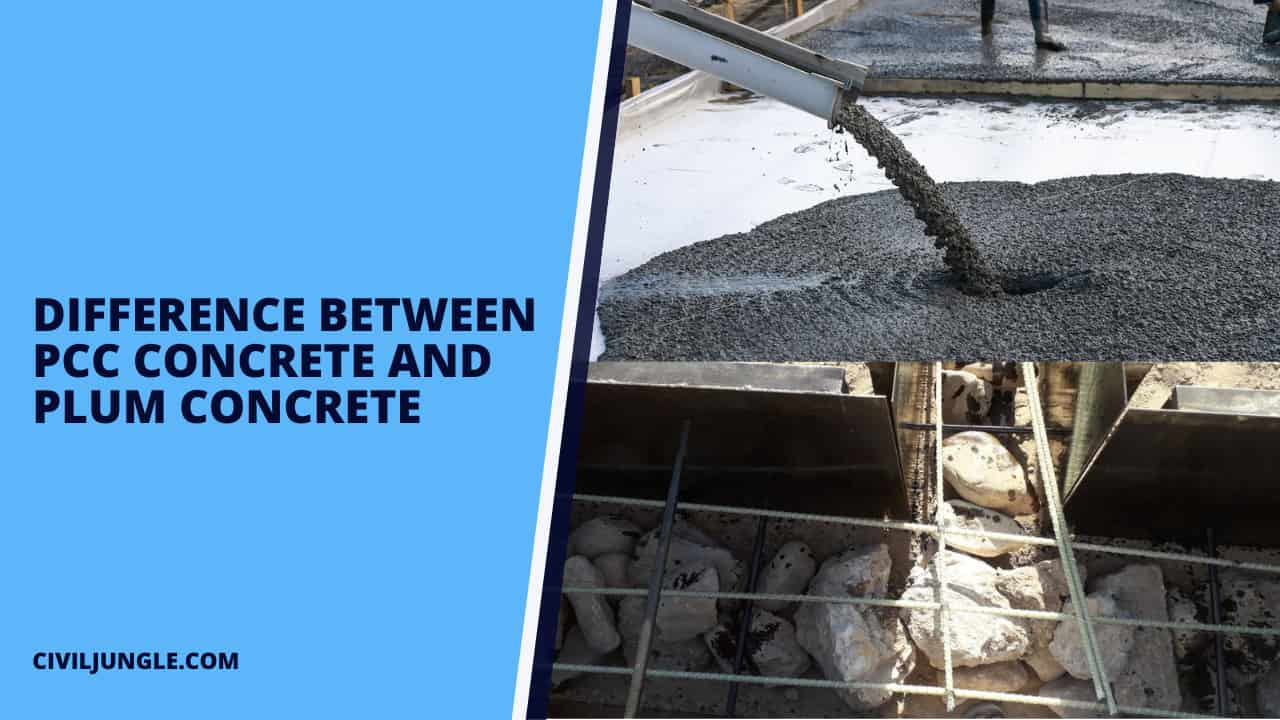
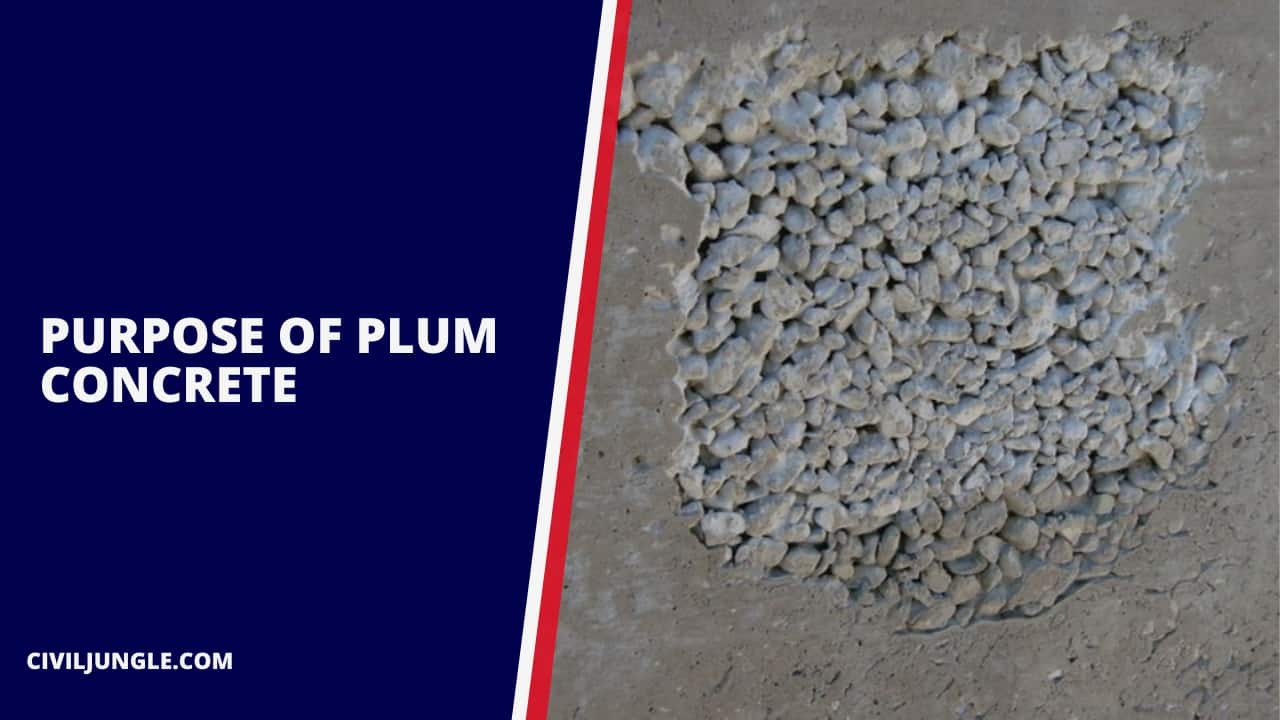

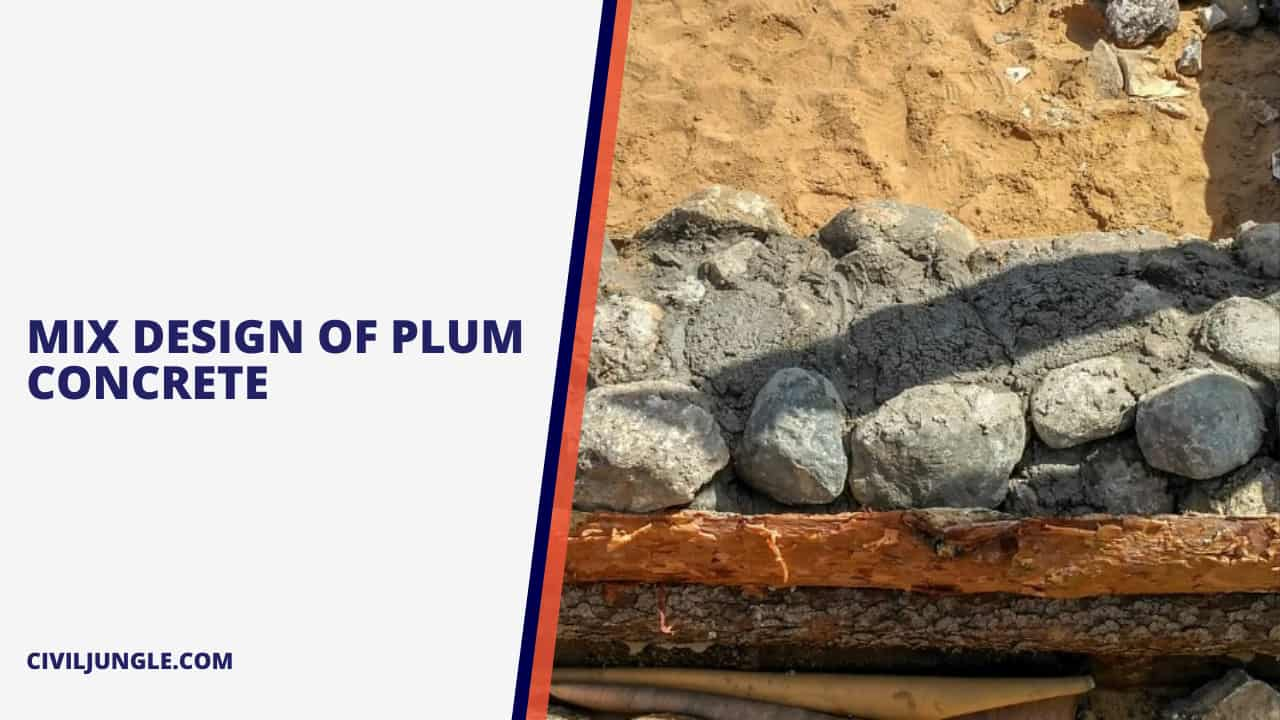
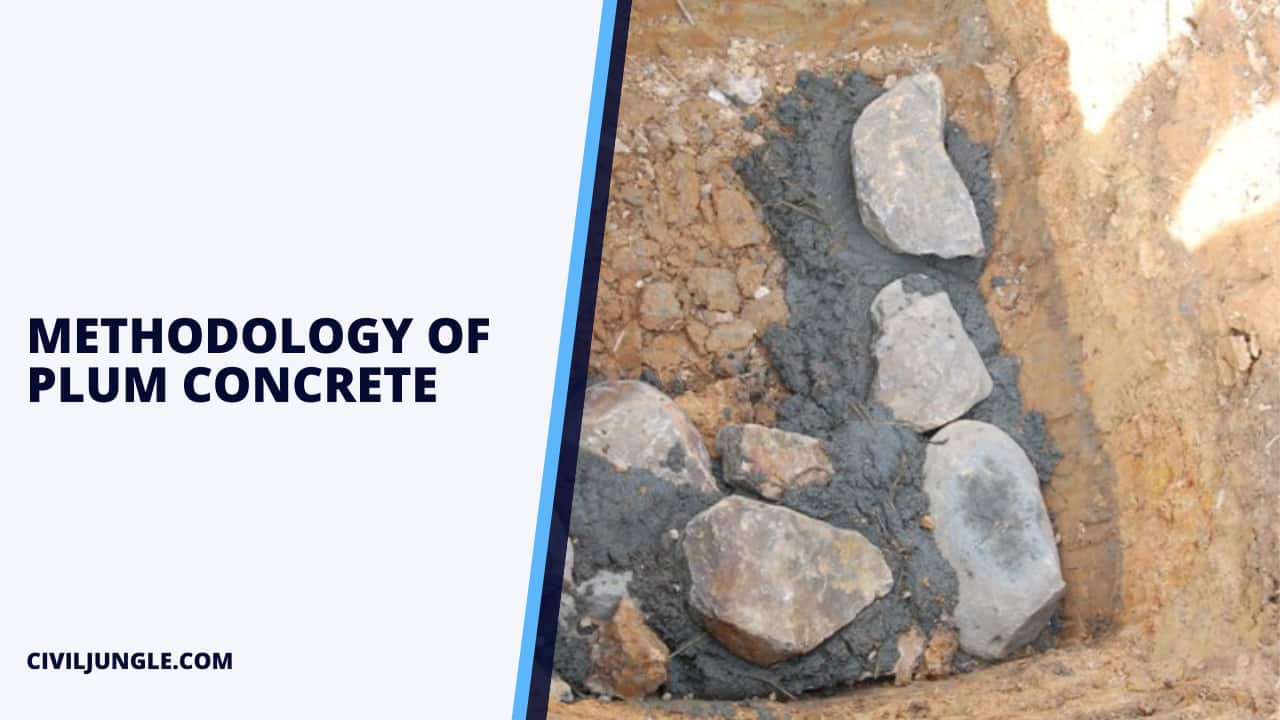
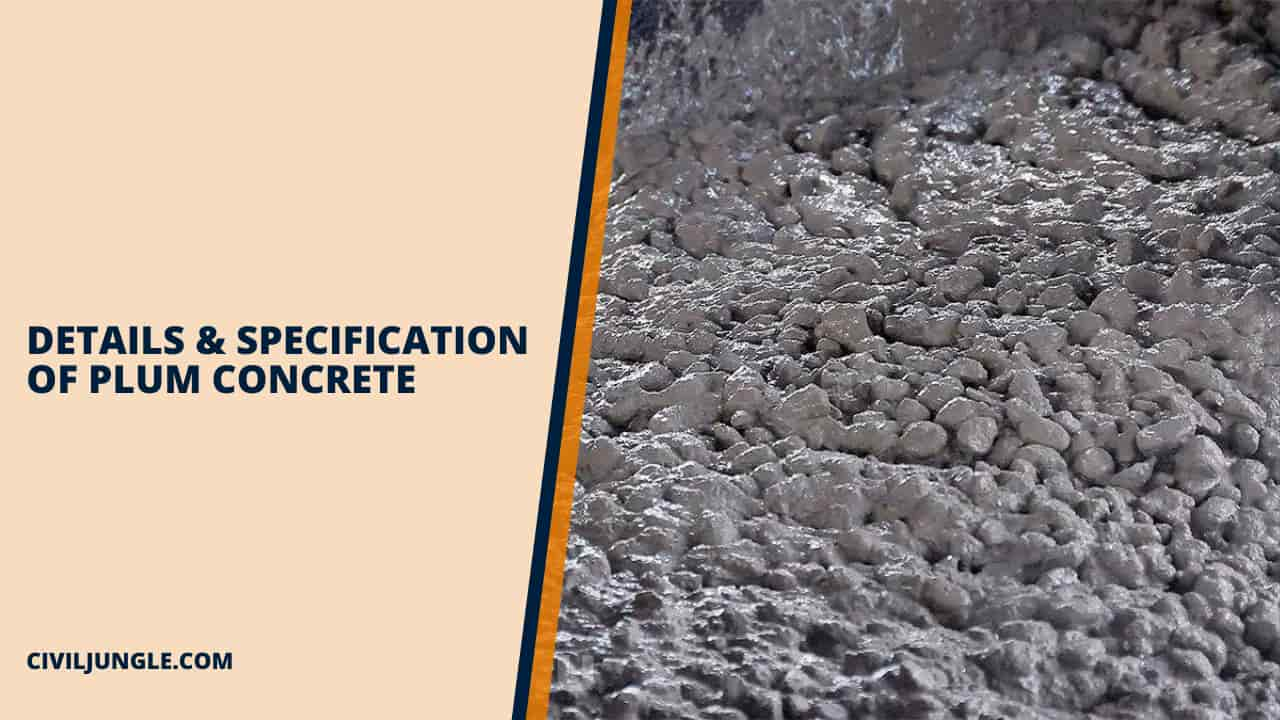

Hi to every one, the contents existing at this web page are actually awesome for people experience, well, keep up the nice work fellows.
“Plum Concrete can be utilized in areas that need massive concrete placements such as concrete dams or bridge piers. In these instances pieces of
Plum Concrete can ”
This line you have wrote two time in same line
Valuable article
Thanks,
For reading my article, and also thanks for showing my error.
Very good article for knowledge and economizing the construction cost. To use in National Highway projects IRC guidelines referring to use of plums concrete will be required. If you have any IRC reference related to plum concrete plz share.
I like the valuable information you provide in your articles.
I will bookmark your weblog and check again here regularly.
I am quite sure I’ll learn lots of new stuff right here!
Best of luck for the next!
Does a Vibrator is used in Plum Concrete?
Not required